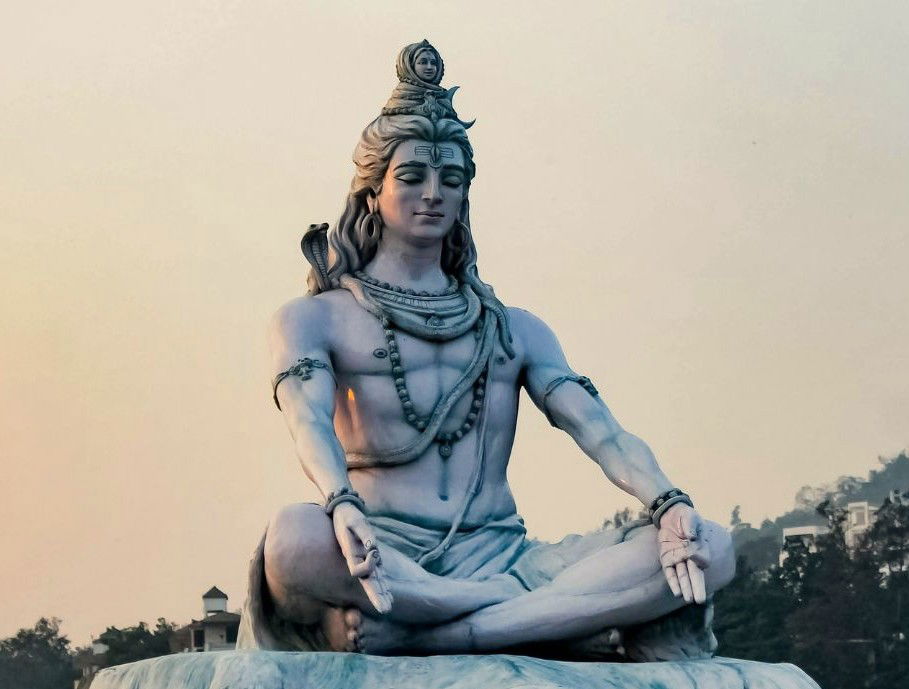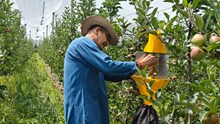
Maha Shivratri, also known as the ‘Great Night of Shiva,’ is one of the most significant and auspicious occasions in Hindu mythology. It honors Lord Shiva, revered as the god of destruction and transformation in the holy trinity (Trimurti) of Brahma, Vishnu, and Maheshwara. Lord Shiva, the husband of Goddess Parvati and father of Lord Ganesha and Kartikeya, is also celebrated by numerous other names, including Adiyogi, Bholenath, Bhairava, Kailashnath, and Mahadev. His role extends beyond being a powerful deity in Hinduism—he is also the Adi Guru, the first Guru of Yoga. His profound connection to yoga has led to the attribution of many yogic practices and philosophies to him.
Maha Shivratri is not just a celebration in India; it is observed by pilgrims around the world, who chant the sacred words "Om Namah Shivaya," with the sound of "Om" believed to bring inner peace and spiritual wisdom into one's life. In Kashmir, the occasion is known as Har-ratri or Haerath, meaning the "Night of Hara." Meanwhile, in Nepal, the renowned Pashupatinath Temple remains open throughout the night on Maha Shivratri, welcoming worshippers to offer their prayers on this sacred day.
The significance of Maha Shivratri lies in the commemoration of two auspicious events: the day Lord Shiva united with Mount Kailash and the day he married Goddess Parvati. This year, the sacred occasion of Maha Shivratri falls on February 26th, marking the 14th day of the lunar month of Phalguna.
Timings of Puja
-
Chaturdashi Tithi (Beginning): 26 February – 11:08 AM
-
Chaturdashi Tithi (Ends): 27 February – 08:54 AM
-
Nishita Kaal Puja : 27 February - 12:08 AM to 12:58 AM
On this day worshippers from all over the world celebrate this day by offering Puja, preparing prasad and keeping fast. Things like Datura flower, Milk, Bel Patra and Cannabis leaves hold a prominent place among the offerings given to the deity on this day.
One of the major significances of Maha Shivratri is the offering and consumption of Bhang prepared from the Cannabis Plant. It is believed that offering bhang to Lord Shiva brings spiritual growth and enlightenment in one’s life.
How is Maha Kumbh linked to Maha Shivratri 2025?
The Maha Kumbh, the largest spiritual gathering of Hindu pilgrims to date, takes place in Prayagraj, India, once every 144 years. The last day of Maha Kumbh viz, the 26th of February 2025 and its alignment with Maha Shivratri 2025 makes it a divine day for Hindu devotees and spiritual seekers to take a holy dip in river Ganga (the Shahi Snan) for spiritual liberation.
This rare celestial alignment makes Maha Kumbh 2025 even more special for Hindu devotees, as River Ganga, the lifeline of the Kumbh, is believed to have originated from the sacred locks of Lord Shiva. The union of these two sacred occasions amplifies the spiritual energy, making it a once-in-a-lifetime opportunity for seekers of divine blessings.
Bhang– A boon or ban
Bhang, a thick paste made from the leaves and flowers of the cannabis plant (Cannabis sativa) has been a part of India as early as 1000 BC. Traditionally prepared during the occasions of Maha Shivratri and Holi. It is taken in the form of goli, laddoos, chutney, lassi, sharbat, or thandai.
The female cannabis or marijuana plant buds and flowers from which bhang is prepared have been a significant part of ayurvedic medicines that claim to cure nausea, vomiting, and physical discomfort. Many research also claims that Bhang has anti-carcinogenic properties but this area is yet to be explored fully.
However, continuous consumption of cannabis has shown multiple side effects in people such as a change in mood, fatigue, increased anxiety, dizziness, loss of focus to loss of memory in extreme cases.
Therefore, the Narcotic Drugs and Psychotropic Substances (NDPS) Act of 1985 has fully banned cannabis consumption and marketing in three forms viz., Charas, Ganja, and Mixtures. Bhang on the other hand is partially banned in some states of NDPS Act and not universally banned as it is freshly prepared from the leaves and flowers of the cannabis plant.
Bhang and its connection to Maha Shivratri
Coming back to the significance of Bhang with holy occasions like Maha Shivratri, Bhang triggers a sense of peace and relaxation in human beings. Lord Shiva being a meditator and free-spirited who lives in the snow-capped mountain of the Himalayas has consumed bhang to move into a state of calm, meditate, and attach himself to a transcendent world.
This is the probable reason why the devotees also believe in consuming bhang, to reach a state of calmness and peace, enhancing their spiritual focus and encouraging deep introspection.
Lord Shiva is often depicted as a free spirit who lives in the Himalayas, with a serene and detached nature. In various texts, he is shown to have consumed bhang to relax, meditate, and transcend worldly attachments. He is sometimes called Vighnaharta (remover of obstacles) and Bhole Baba (the innocent one), a deity who does not judge but offers solace to those who approach him with devotion.
Many devotees believe that consuming bhang on Maha Shivratri helps them emulate Lord Shiva’s meditative state. It is thought to enhance spiritual focus, calm the mind, and encourage deep introspection. It allows worshippers to enter a state of deep meditation and union with the divine.
Maha Shivratri 2025 will be an extraordinary time for devotees to reflect on their lives, seek blessings from Lord Shiva, and renew their commitment to their spiritual practices. As they engage in fasting, prayer, and meditation, the consumption of bhang remains a cultural and traditional aspect for many, adding a layer of symbolic connection to Lord Shiva’s essence.
The mystical significance of bhang, along with the spiritual practices observed during this sacred night, offers devotees a unique way to deepen their devotion and achieve inner peace. As we celebrate Maha Shivratri in 2025, let us embrace the opportunity to immerse ourselves in the meditative, transformative energies of this sacred night, remembering the true essence of the festival.
















